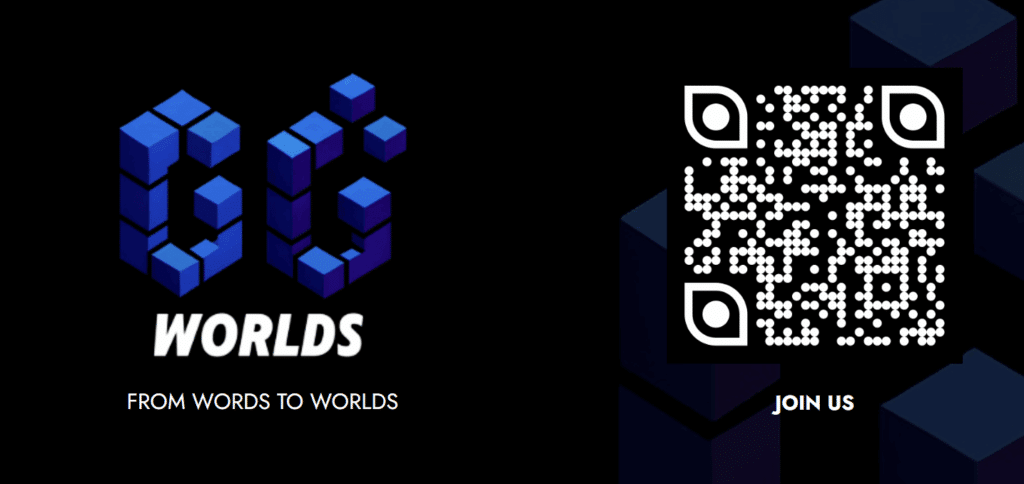Introduction: From Words to Worlds
Game design is one of the most creative fields in digital media today but for most developers, turning ideas into immersive worlds remains slow, expensive, and overwhelming. Especially for independent creators, level design, the art of shaping the physical and emotional journey of a player, is often the most demanding part of game-making. At IAAC, we developed GG WORLDS, a generative AI plugin that empowers game developers to create complex, believable environments with just a few lines of text. By combining architectural intelligence with cutting-edge AI, we’re bridging the gap between imagination and playable reality.
Why Level Design Matters
Level design isn’t just about aesthetics – it’s the framework that gives context, emotion, and interactivity to a game. Whether it’s a dystopian sci-fi city, a historical reconstruction, or a simple top-down map, the environment sets the tone of the experience. It’s what turns gameplay into a story, and players into protagonists. Game worlds offer an unmatched sense of immersion, emotional investment, and agency – and environments are the canvas on which these experiences are drawn.
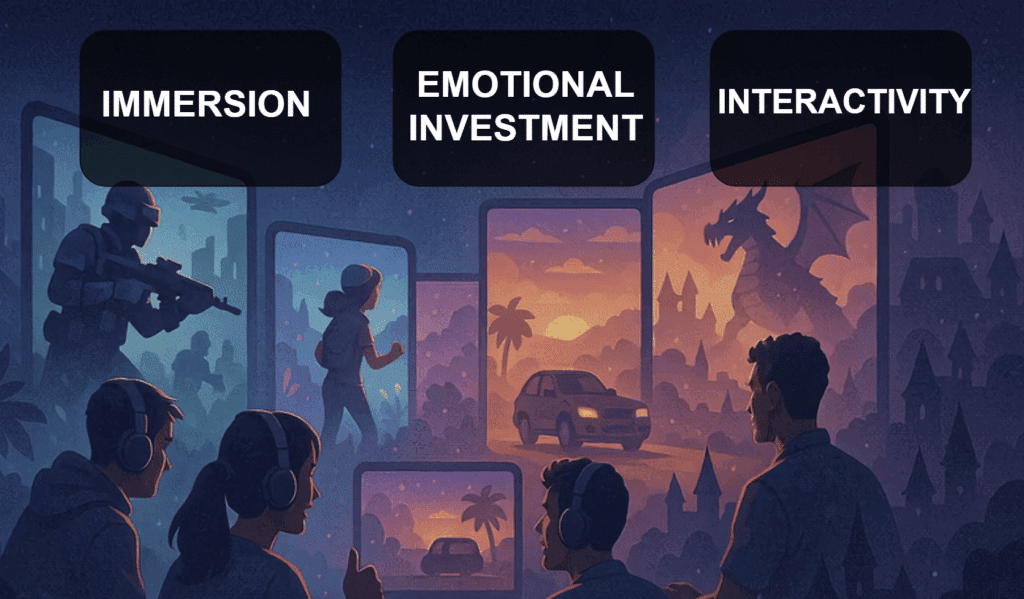
The Indie Developer
Despite the importance of environment design, most tools available today are built for large studios with massive teams and budgets. Indie developers – who make up 99% of the gaming industry – are often left behind, forced to spend months modeling buildings, researching street layouts, and manually blocking out every detail. These constraints limit creativity and lead to rushed or incomplete worlds.
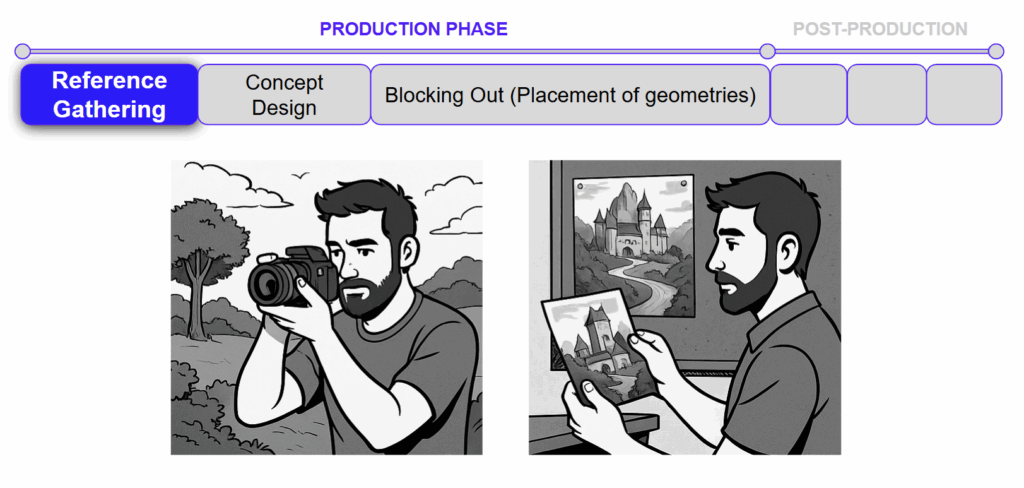
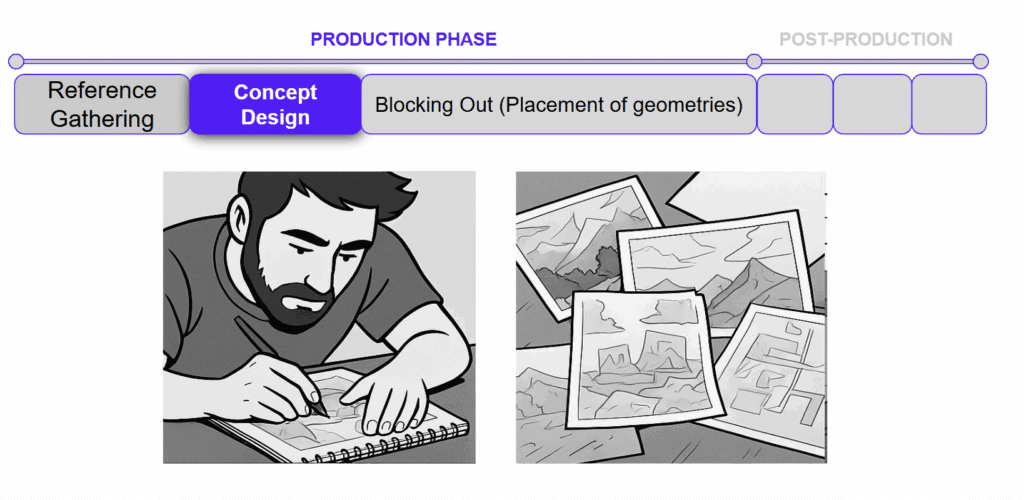
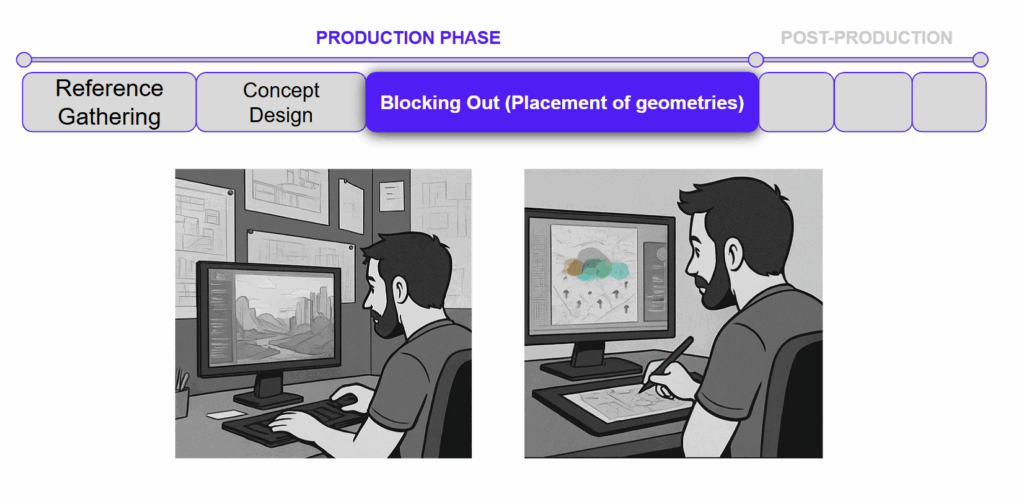
With GG WORLDS, we aim to level the playing field by giving small teams and solo developers access to intuitive, fast, and professional-grade tools:
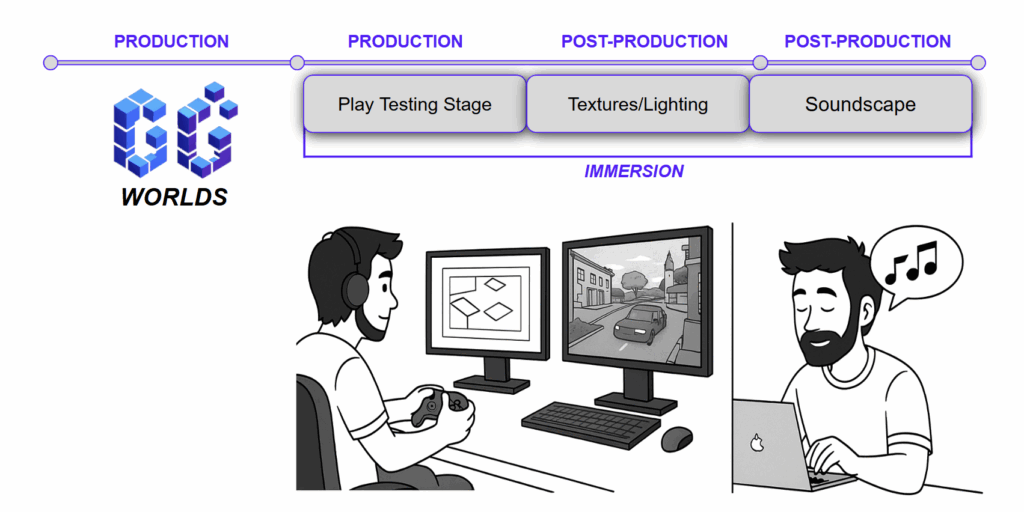
Meet GG WORLDS: Our AI Plugin for Environment Generation
GG WORLDS is a generative world-building plugin built directly into Blender, a free and open-source 3D modeling platform already familiar to most developers. With just a few clicks, users can describe the terrain, buildings, and landmarks they envision – “a hilly landscape with winding streets and dense low-rise buildings” – and GG translates that into 3D geometry inside Blender. Each prompt initiates a staged generation process, letting users build immersive, topography-aware environments without starting from scratch.
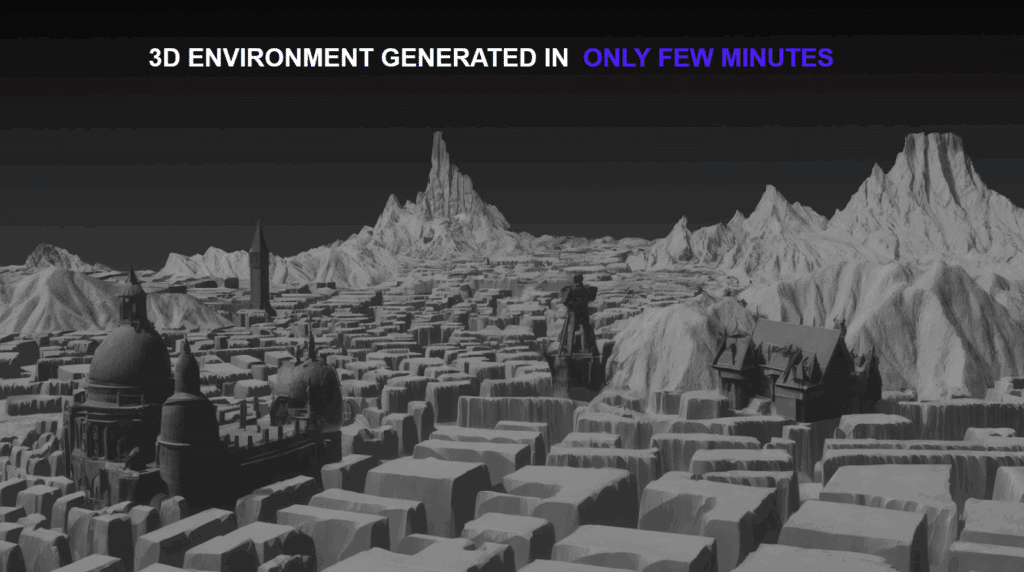
Behind the Scenes: Training the Tool
In GG, the user simply has to prompt in stages: topography, streets, buildings and landmarks. The prompts are then sent to text to image generation models, making layer maps. There is a vertical relationship between the generation stages of the map. Each layer is produced by referencing the previous one. The components are then assembled inside a blender block to produce the environment.
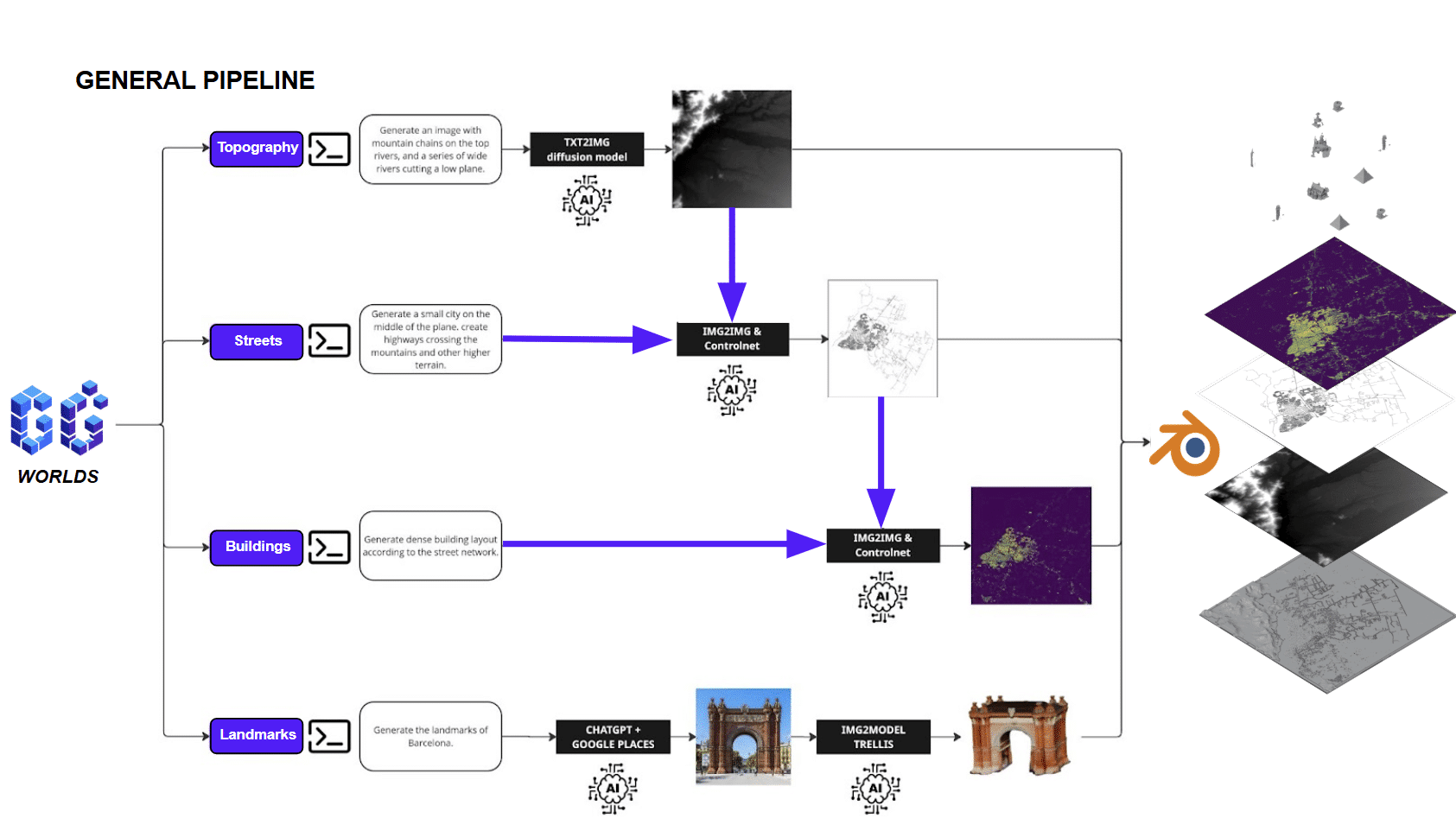
To make GG WORLDS work, we built a custom dataset combining OpenStreetMap and Google Earth Engine data from over 1,000 cities. These maps were then enriched with descriptions generated by large language models, forming a library of urban knowledge. From here, we began fine-tuning AI models using LoRA (Low-Rank Adaptation), allowing us to generate accurate topographies and city grids using relatively small datasets. For example, by training image generation models on our custom terrain maps, we improved fidelity over time, producing elevation-aware layouts that aligned closely with real-world landscapes.
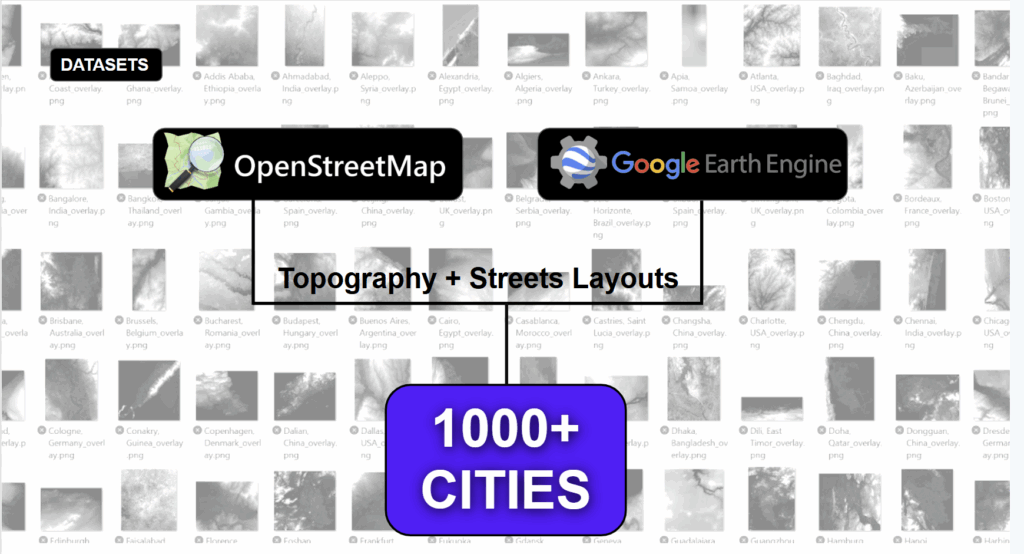
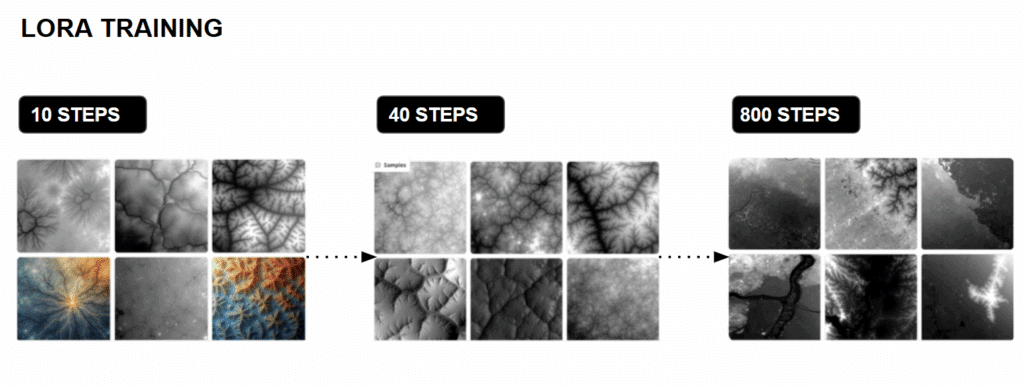
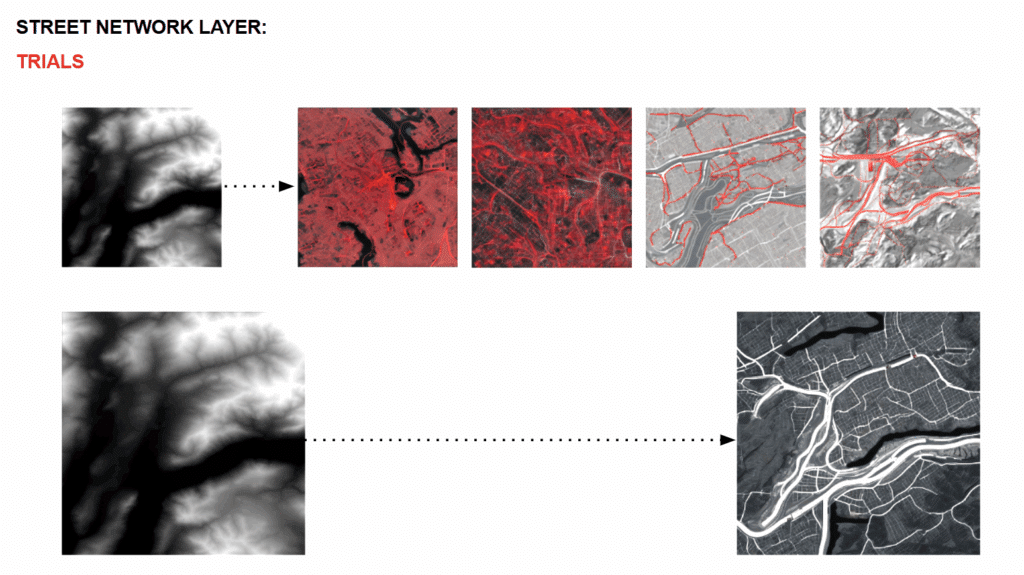
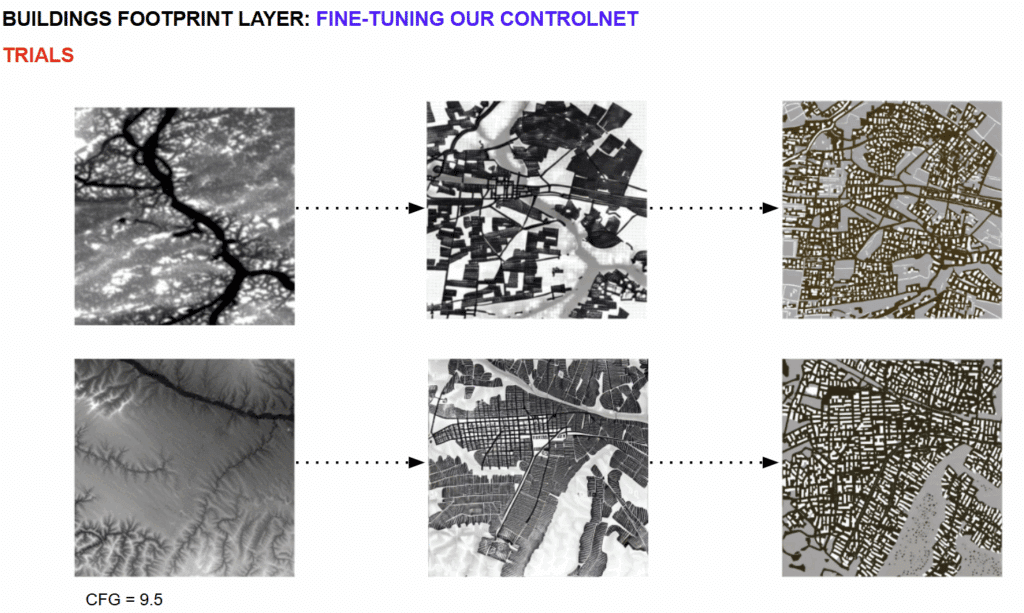
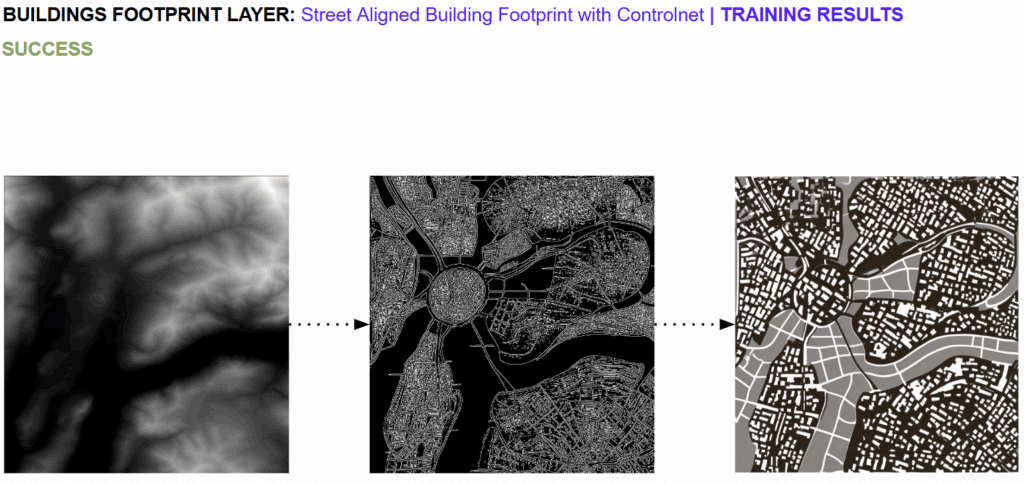
From Pixels to Geometry: The Blender Integration
Inside Blender, GG WORLDS offers a simple but powerful interface. Users input their prompt in stages – first topography, then streets, then buildings. Each layer references the one before it, allowing vertical consistency between terrain and built form. These outputs are then visualized as previews, and once confirmed, converted into editable 3D geometry using Blender’s displacement and mesh generation tools. What would normally take days of modeling can now happen in minutes – ready to play, simulate, or iterate.
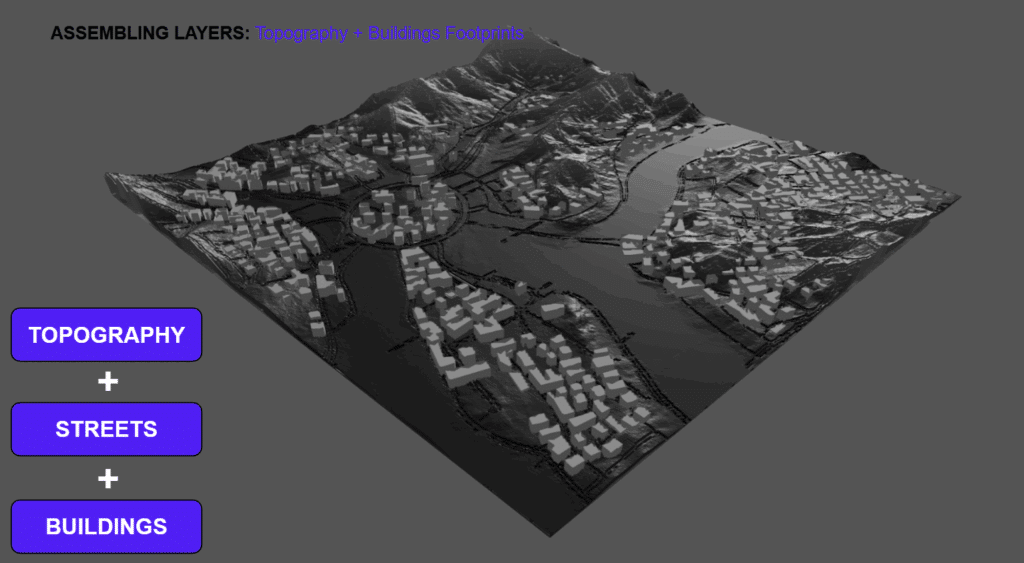
Landmark Generation: Three Pipelines for Creativity
We also tackled one of the most expressive parts of any city: its landmarks. GG WORLDS offers three pipelines for landmark generation:
- Existing Landmarks: Users input a location-based prompt, triggering an automated photo-retrieval pipeline (e.g., via Google) followed by 3D generation from real images.
- Blended Landmarks: This mode mixes styles, allowing users to create new architectural icons by blending references from multiple cities or time periods.
- Speculative Landmarks: Designed for total freedom, this pipeline uses diffuser models to generate entirely new concepts from scratch – ideal for fantastical or futuristic world-building.
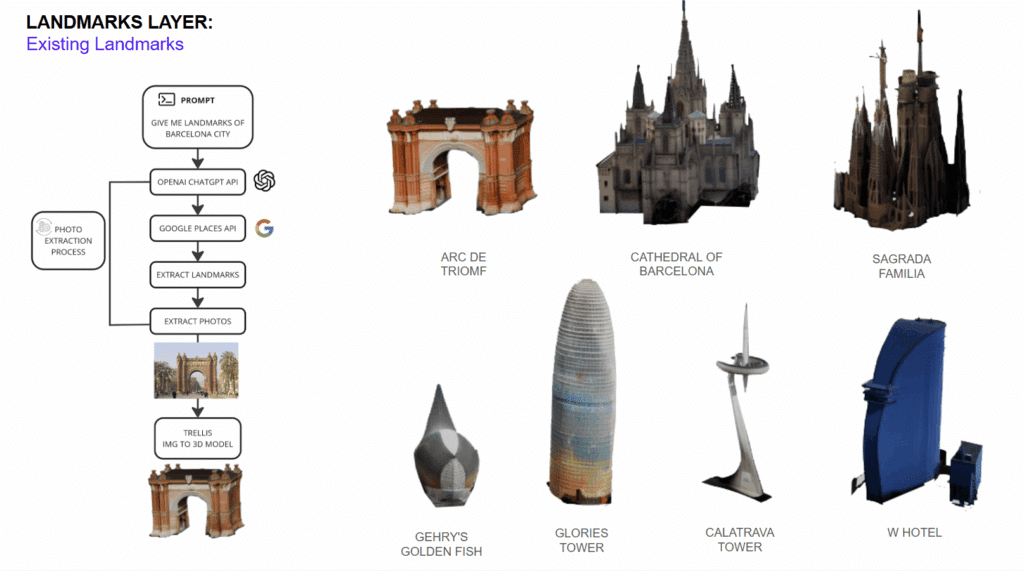
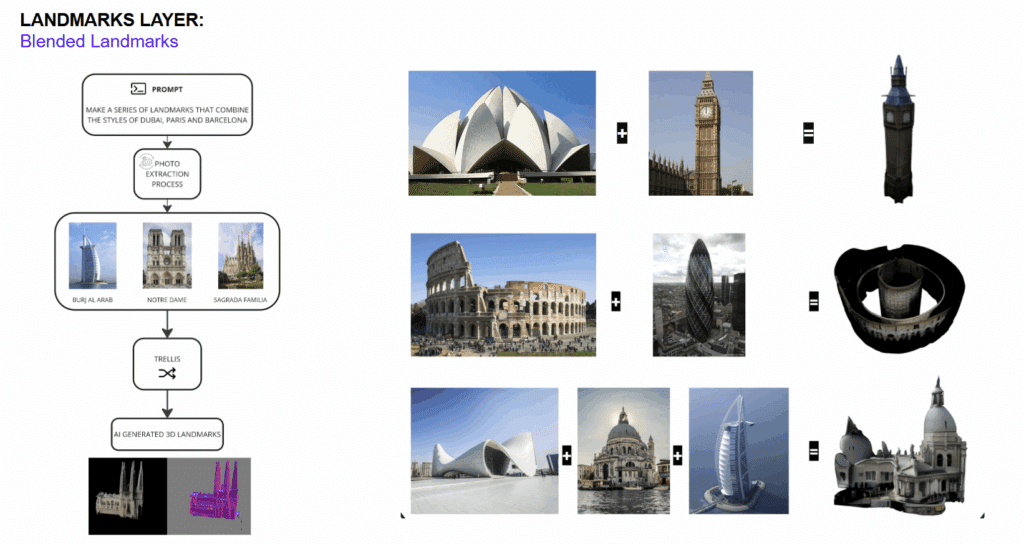
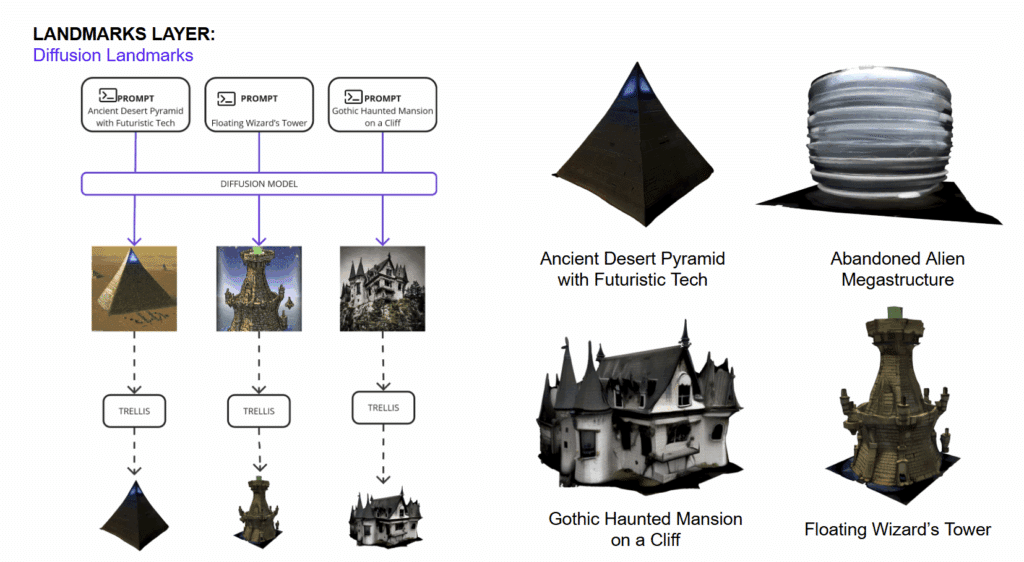
Beyond Gaming: Expanding Use Cases
While we developed GG WORLDS with indie game developers in mind, the possibilities extend far beyond. For example, urban planners often struggle to communicate future visions of cities. With GG, planners can generate entire master plans – including terrain, zoning, and infrastructure – with a single prompt. Similarly, filmmakers can block scenes in minutes, rapidly iterating on environments without extensive modeling. And in automotive simulations, fast-generated worlds can be used for path planning, crash testing, and object detection scenarios. Fast, procedural, and richly detailed – our tool supports any industry where digital environments matter.
